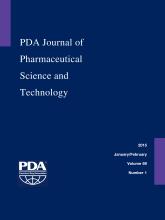Viral clearance and inactivation by the bulk protein purification process are a critical component of the overall strategy to ensure the safety of therapeutic proteins derived from mammalian cell culture. A mechanistic understanding of the factors that influence viral clearance and inactivation are essential for ensuring that adventitious agent control is conserved as downstream unit operations are refined and implemented within a design space via a quality by design (QbD) approach or under “modular” operating conditions. The ability to leverage large databases (1) of information on viral clearance has also fostered specific hypothesis-driven experiments that can be performed to address known gaps in mechanistic knowledge.
A shared recognition of the (1) critical nature of viral clearance, (2) acknowledged limitations in mechanistic understanding, and (3) opportunities for improvement led to the initiation of the Viral Clearance Symposia Series in 2009. The focus of that first meeting, held in Indianapolis, IN, was to review the current state of viral clearance for specific unit operations, to discuss lessons learned, and to chart a course to experimentally address the gaps. Proceedings were subsequently published in Developments in Biologicals in 2010 (2).
The 2nd Viral Clearance Symposium was held in 2011 in South San Francisco, CA to extend progress made in the 2009 meeting by focusing on research progress to close the gaps identified during the 2009 Symposium, discussing an integrated adventitious agent control strategy and associated risk assessment. It also addressed topics such as QbD approaches to viral clearance, a critical assessment of emerging technologies (e.g., Mixed-Mode Chromatography, Anion Exchange [AEX] Membrane adsorbers) as well as applications of High-Throughput Screening (HTS) to evaluate mechanisms of virus partitioning and clearance. Proceedings from the 2nd Viral Clearance Symposium were published in a total of 11 articles in the PDA Journal (Vol. 68) in early 2014.
The 3rd Viral Clearance Symposium was held in 2013 in Princeton, NJ. The meeting included a review of the follow-up items from the 2nd Viral Clearance Symposium, discussions on addressing gaps in traditional unit operations (e.g., viral filtration, AEX chromatography, protein A chromatography). We also covered new approaches to viral inactivation and clearance (e.g., High-Temperature/Short Time (HTST) treatment as a viral barrier, impact of impurities on membrane adsorbers). Finally, there were several case studies on implementation of an integrated adventitious agent control strategy linking upstream and downstream processes as well as the impact of host cells on viral clearance strategy.
Some key highlights of the 3rd Viral Clearance Symposium were significant progress on further understanding “outliers” and mechanistic gaps in traditional unit operations. One topic was an extensive review of approaches and tools to characterize the impact of depressurization on viral filtration performance and potential linkage to virus breakthrough. Another key item was the observation that breakthrough of impurities in AEX chromatography appears to correlate with virus breakthrough. Although further research is required to demonstrate the general applicability of this approach, there is a potential to utilize impurity breakthrough as a surrogate marker for virus breakthrough. This is a big advance because impurity breakthrough is easier to measure in a robust and effective manner. An insightful experimental approach was presented that helped to further explain the mystery behind variable viral clearance observed in protein A chromatography. Results of this approach provide clues explaining this observation; a portion of virus can associate with monoclonal antibodies bound to the protein A ligand - an association that can be disrupted or enhanced via modification of the chromatography buffer conditions.
In this issue of the PDA Journal the summarized findings and next steps from the 2013 3rd Viral Clearance Symposium are presented.
- © PDA, Inc. 2015






